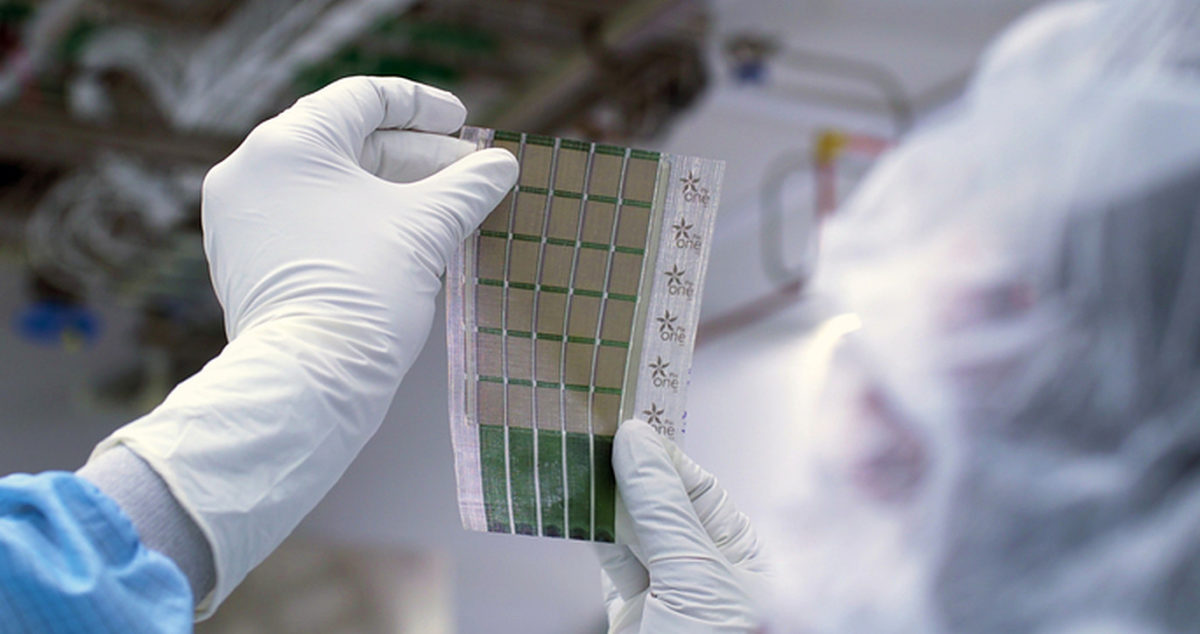Scientists at the Massachusetts Institute of Technology (MIT) have developed fully printed, large-area organic photovoltaic (OPV) modules that could be used as wearable power fabric or deployed in remote locations for assistance in emergencies.
“They are one-hundredth the weight of conventional solar panels, generate 18 times more power-per-kilogram, and are made from semiconducting inks using printing processes that can be scaled in the future to large-area manufacturing,” the researchers said, noting that the thin-film devices can be laminated onto many different surfaces. “Ultra-thin PVs can be prepared on premade substrates such as plastic films and metal foils, or on in-situ formed substrates such as chemical vapor-deposited parylene or solution-processed polyimide.”
The US group built the module's cells with vapor-deposited parylene as the in-situ formed releasable substrate, a hole-transporting material (HTM) based on PEDOT:PSS, a donor-acceptor pair molecule known as PV2000:PC60BM that was provided by Taiwan's Raynergy Tek, and coated nanowire films of 7.7 nm, with the deposition of tin-oxide nanoparticles, act as the electron transport layer.
“The photoactive layer of PV2000:PCBM is coated, followed by the hole-transporting PEDOT:PSS layer,” the scientists explained. ” A relatively thick layer of the hole transporting material is coated on top of the active layer to provide sufficient protection from the mechanically abrasive process of screen-printing the silver top electrode.”
They built integrated fabric-PV modules with specific power of 370 W kg−1, weighing 105 g m−2, and free-standing devices with a specific power of 730 W kg−1, wighing 52 g m−2.
“Overall, the ultra-thin device performance was comparable to devices made directly on glass except for a reduction in short circuit current which was ascribed to the reduced transmission from process variation between in-house deposition of the transparent electrode in comparison to commercially procured ones deposited directly on glass,” they said, noting that the current aslo decreased upon delamination due to some wrinkling of the free-standing film. “Such small-scale device tests provided sufficient support to proceed further with the process development of fabricating larger OPV modules.”
They presented the new organic cell tech in “Printed Organic Photovoltaic Modules on Transferable Ultra-thin Substrates as Additive Power Sources,” which was recently published in Small Methods.
“Essential to fully realizing the potential of this work, is the availability of equally ultra-lightweight encapsulation barriers that can protect the active layers of fabric-PVs from atmospheric exposure, which in turn can extend the operational lifetime of these devices, as needed for real-world applications,” they concluded.
This content is protected by copyright and may not be reused. If you want to cooperate with us and would like to reuse some of our content, please contact: editors@pv-magazine.com.




3 comments
By submitting this form you agree to pv magazine using your data for the purposes of publishing your comment.
Your personal data will only be disclosed or otherwise transmitted to third parties for the purposes of spam filtering or if this is necessary for technical maintenance of the website. Any other transfer to third parties will not take place unless this is justified on the basis of applicable data protection regulations or if pv magazine is legally obliged to do so.
You may revoke this consent at any time with effect for the future, in which case your personal data will be deleted immediately. Otherwise, your data will be deleted if pv magazine has processed your request or the purpose of data storage is fulfilled.
Further information on data privacy can be found in our Data Protection Policy.